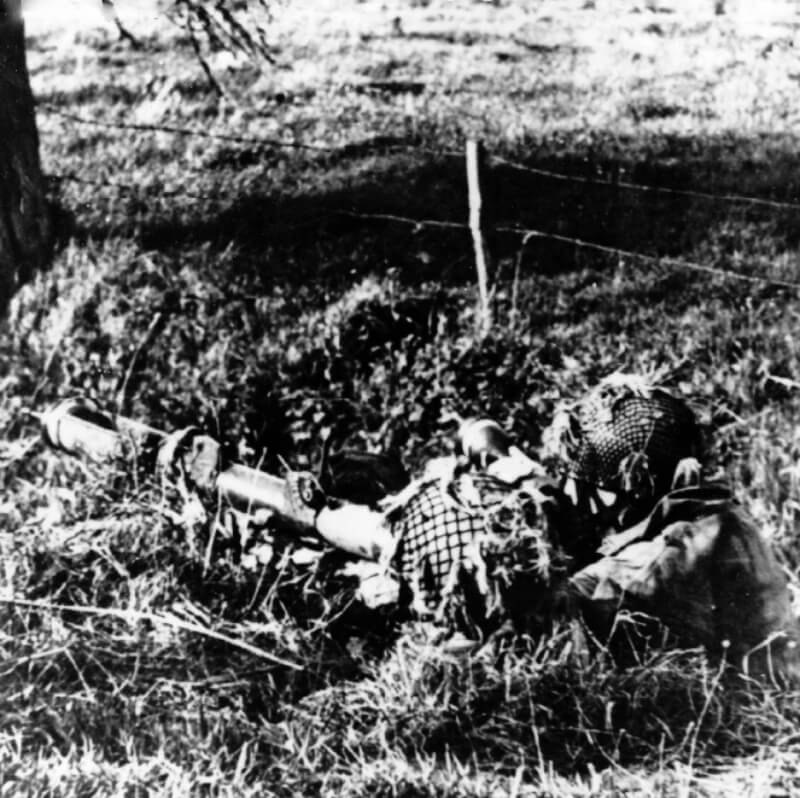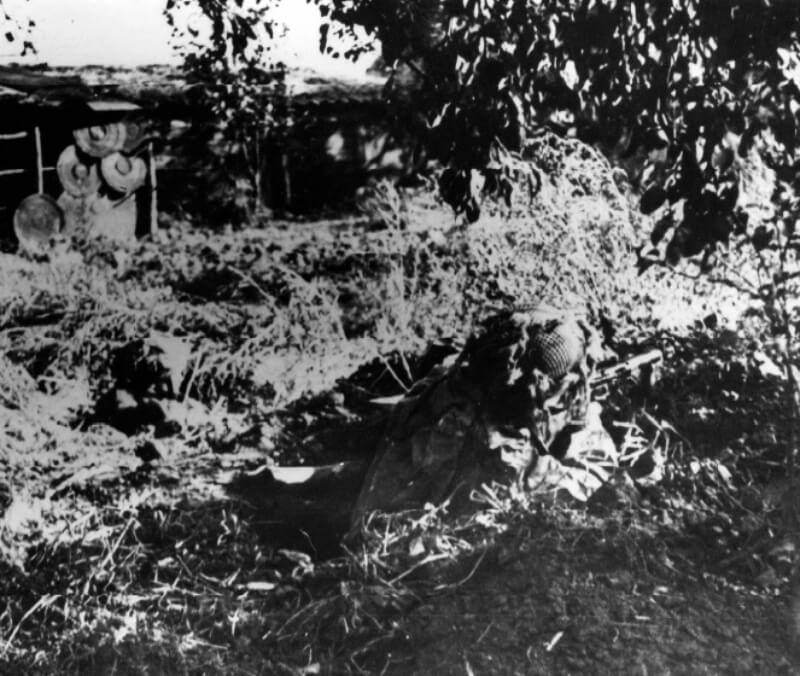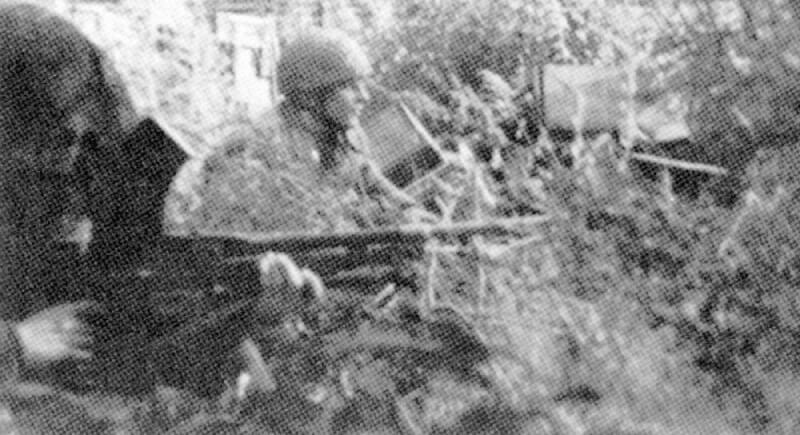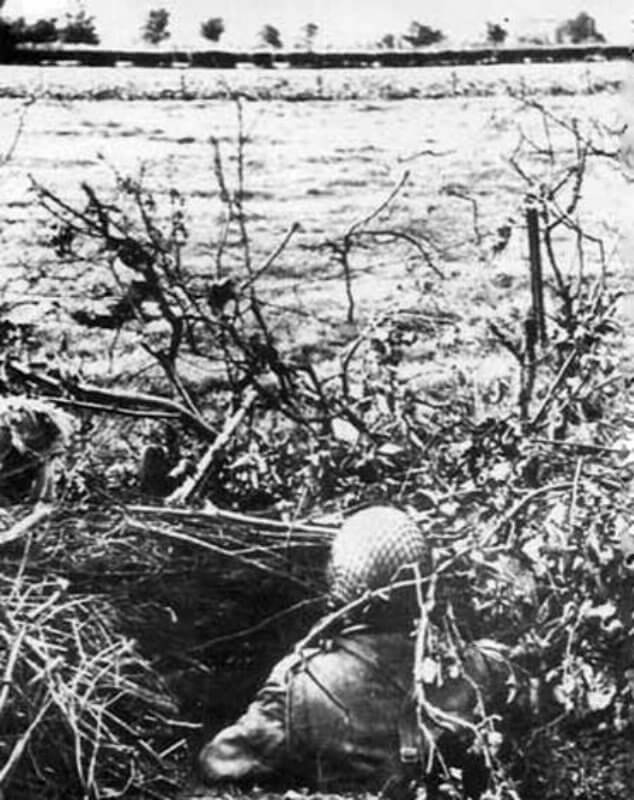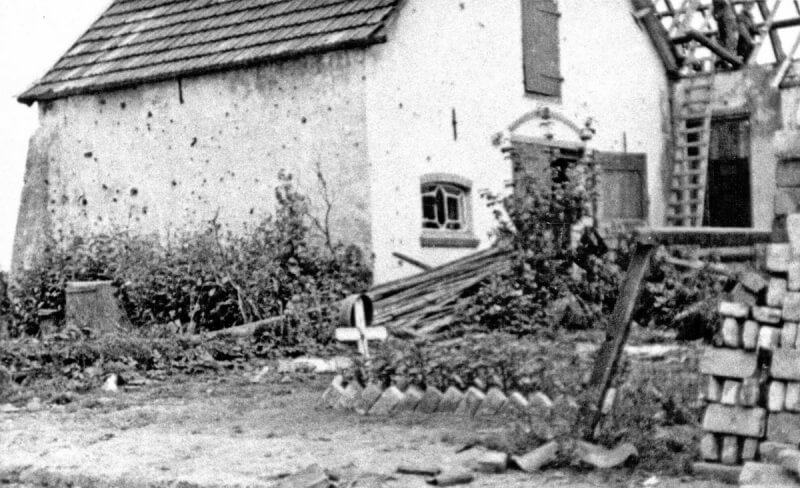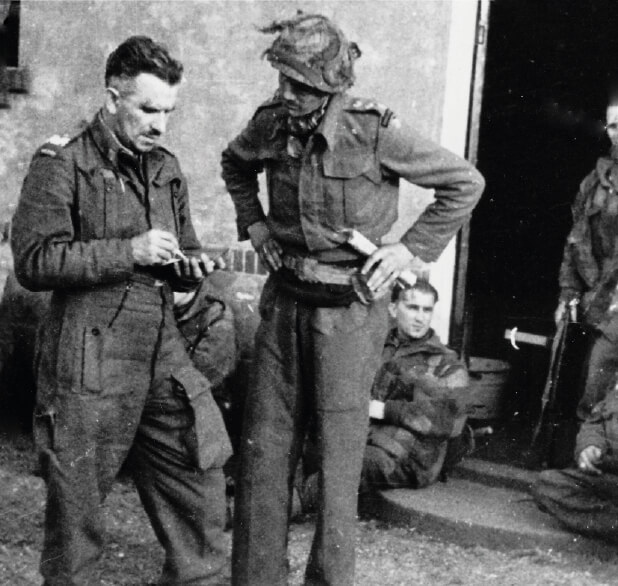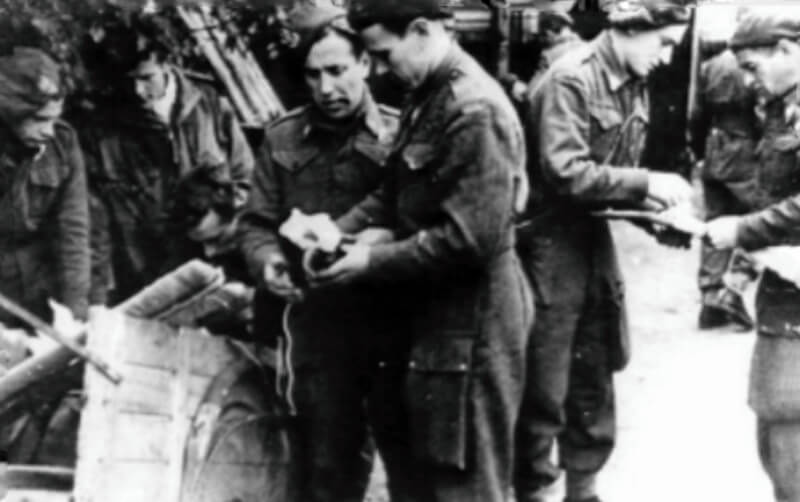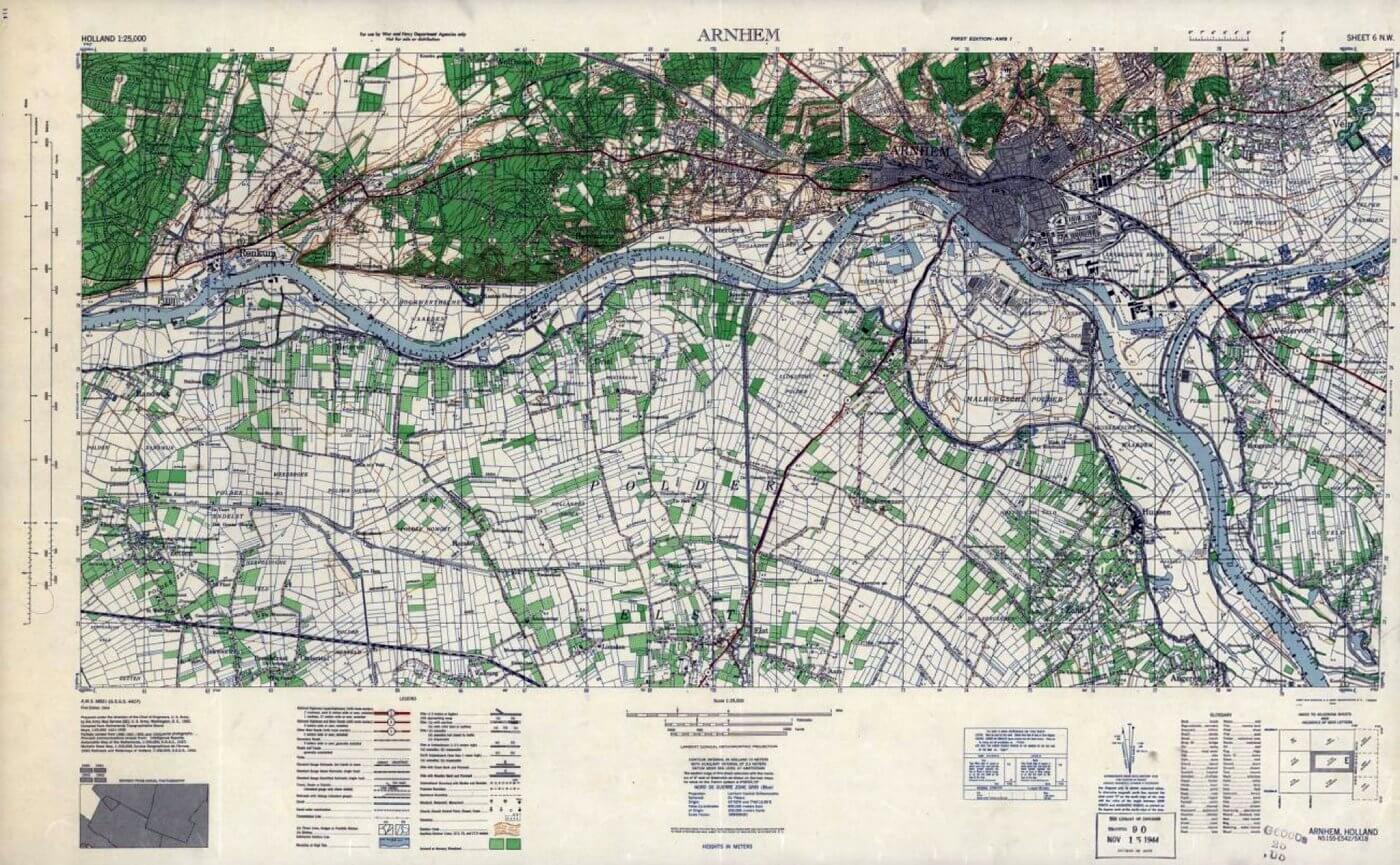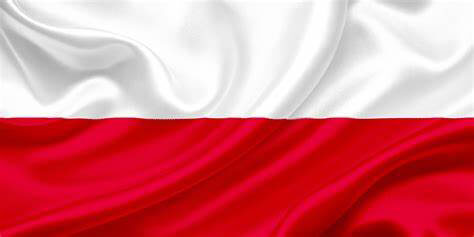| September 17th, 1944 – September 26th, 1944 |
| Operation Market Garden |
| Objectives |
- Land at Landing- and Drop Zones at Wolfheze, Oosterbeek, and Ede.
- Capture the road bridge in Arnhem and hold it for a minimum of 48 hours
- Link up with the advancing ground forces of the 30th Corps.
| Operational Area |
Arnhem Area, The Netherlands
| Allied Forces |
- 1st Airborne Division
- 1st Polish Independent Parachute Brigade
- 52nd, (Lowland) Airlanding Division
| Axis Forces |
- II SS-Panzer-Corps
- 9. SS-Panzerdivision “Hohenstaufen”
- 10. SS-Panzerdivision “Frundsberg”
- Kampfgruppe von Tettau
- Feldkommandantur 642
- SS-Unterführerschule Arnheim
- Bataillon I
- Bataillon II
- Bataillon III
- SS-Polizei Schule
- SS-Ausbildungs und Ersatz Bataillon 4
- Bataillon I
- Bataillon II
- SS-Wach Battalion 3
- Schiffsturm Abteilung 10
- Schiffsturm Abteilung 6/14
- Fliegerhorst Battalion 2
- Fliegerhorst Battalion 3
- Artillerie Regiment 184
- Sicherheit Regiment 42
- Kampfgruppe Knoche
- Sicherheit Regiment 26
- Bataillon I
- Bataillon II
- MG Bataillon 30
- FlaK Abteilung 688
- Bataillon I
- Bataillon II
- Hermann Göering Schule Regiment
- Hermann Göering Schule Regiment
- Bataillon I
- Panzer Abteilung 224
- SS Ersatz Abteilung 4
- Deelen Airfield FlaK Kompanie
- Wach Kompanie
- Reichs AD
- Hermann Göering Schule Regiment
- Sicherheit Regiment 26
- Kampfgruppe Kraft
- SS-Panzer Grenadier Ausbildungs und Ersatz Bataillon 16
- Schwerepanzer Abteilung 506
- Schwerepanzer Kompanie Hummel
- StuG Abteilung 280
- Artillerie Regiment 191
- Bataillon I
- Bataillon II
- Bataillon III
- SS-Werfer Abteilung 102, Hauptsturmfürer Nickmann
- Kampfgruppe Brinkmann
- Kampfgruppe Bruhn
- Kampfgruppe Harder
- Sperrverband Harzer
- MG Bataillon 47
- Marine Kampfgruppe 642
- Kampfgruppe Schörken
- Kampfgruppe Kauer
- SS-Abteilung “Landstrum Nederland”
- Kampfgruppe Knaust
- Ersatz Abteilung Bocholt
- Panzer Kompanie Mielke
- Kampfgruppe Spindler
- FlaK Abteilung Swoboda
- Kampfgruppe von Allworden
- Kampfgruppe Weber
| Second Night |
Around 03:00, the Officer Commanding of the Parachute Engineer Company reports that ferrying additional troops across the river before dawn is proving nearly impossible. Only 52 troops have been successfully transported, and the company is suffering significant losses. With 15% of the soldiers on the southern bank killed, and both boats and rafts sunk, the situation is becoming dire.
During the night, heavy shelling occurs as troops attempt to cross the river using rubber boats, leaving Driel severely impacted. The bombardment continues throughout the day, and the makeshift hospital does its best to care for the wounded under these difficult conditions.
During the morning, the weather is grey, damp, and foggy, and with it comes an increase in enemy shelling and mortar fire. Sosabowski receives word from the Duke of Cornwall’s Light Infantry that their brigade has encountered strong enemy resistance near Elst, preventing further progress. They have been instructed to scout southwards in an attempt to ease the brigade’s advance.
At 09:00 hours, a liaison officer from Airborne Corps arrives with orders to report the exact situation on Sosabowski’s front back to General Browning. Despite having already sent ample reports, the officer is sent to confirm the information. He informs Major-General Sosabowski that the brigade is expected to make another attempt to cross the river that night. Additionally, he mentions that the 43rd (Wessex) Infantry Division is expected to break through to the south bank during the day. He agrees to the plan, but only on two conditions: more boats must be provided, as there is only one left from the previous night’s failed attempt, and his troops need immediate resupplies of food and ammunition to ensure their readiness. The officer assures Major-General Sosabowski that the necessary boats can be obtained from the 43rd (Wessex) Infantry Division and that artillery support will be available for the operation. Sosabowski stresses the urgent need to send supplies, particularly rations and ammunition, to the 1st Airborne Division, noting their critical situation. The liaison officer agrees to address the supply issue. Before departing, the officer provides Sosabowski with the first official update on the 1st Parachute Battalion and the remainder of the 3rd Parachute Battalion. He reports that the missing 1st Parachute Battalion and the remainder of the 3rd Parachute Battalion of the brigade are still in Great Britain and that they w reporting that will be dropped near Grave after being delayed by poor weather. They are expected to join the troops in Driel as soon as possible.
A second visitor, a general from the British medical service, arrives and is quickly approached by the Polish troops, who urgently request more medical supplies, especially bandages.
Meanwhile, Sosabowski sends his Chief of Staff to liaise with the 43rd (Wessex) Infantry Division stationed in Valburg-Homoet, stressing the need for food and ammunition resupply to enable the planned river crossing. In response, supplies are promised to be delivered as quickly as possible, and the Poles are assured of artillery support during the crossing.
| Second Drop of the 1st Polish Independent Parachute Brigade near Overasselt |
The remaining elements of the 1st Polish Independent Parachute Brigade that returned to Great britain two days earlier depart from Spanhoe Airfield, bound for Holland. Here they remain grounded, waiting for the fog to clear. At 12:30 hours, Major Tonn is informed that the planes will no longer head to Arnhem, but instead will be redirected to a landing zone near GraveUnlike previous drops near Driel, their designated drop zone is located south of the Waal River at Overasselt, within the sector of the 82nd U.S. Airborne Division, located 25 kilometres from Driel. The decision to drop them there is by Airborne Corps Headquarters, with the plan for the troops to complete the rest of the journey by road. A total of 41 Dakotas from the 315th Troop Carrier Group, carrying 560 troops, primarily from the 1st Parachute Battalion, make the journey.
Reports indicate that every aircraft successfully reached the drop zone, which had previously served as Landing Zone O for U.S. gliders of the 82nd Airborne Division. At 16:45 hours, the paratoopers are dropped at the designated site in Grave. The drop is described as virtually an “exercise jump” due to the minimal resistance encountered. The troops quickly assemble and organise their equipment, knowing they have limited time before the next wave of American gliders is scheduled to land at 17:00 hours. After landing at Overasselt, the Polish troops move to Malden in the Groesbeek area, where they spend the night.
By mid-afternoon, the news that the 1st Parachute Battalion and the remainder of the 3rd Parachute Battalion have been dropped in the Grave area comes through in Driel. The Polish Brigade Headquarters had not been informed. These units are now considered missing, as no contact has been made, leaving the Brigade in the dark about their situation.
Later in the day, Sosabowski is reminded of the significance of September 23rd, 1944, by his aide-de-camp, who invites him to another room. To his surprise, the staff have gathered around an iced cake to commemorate the brigade’s anniversary. Sosabowski is deeply touched that they remembered amidst the chaos of battle.
| Defending Driel |
At the T-junction of Dorpstraat and Honingveldsestraat in Driel, Polish troops have established defensive positions. About eight hundred metres further south, at another T-junction on Dorpstraat, Polish troops have laid anti-tank mines as part of their defensive strategy. As German forces launch an attack the defensive positions of the paratroopers during the day, the Polish are forced to retreat quickly.
As the German assault intensifies around Honingveldsestraat, the Polish forces begin to fall back towards Dorpstraat. During the retreat, a radio operator’s antenna becomes caught in the bushes, causing him to fall behind the unit. Henk te Dorsthorst, a local resident of Driel, steps in to help the operator free his equipment, allowing him to rejoin his comrades and continue the withdrawal. The radio operator is killed later that same day.
| Polish Airborne In Oosterbeek |
The first group of Polish troops that crosses the river departs from the church to take up positions on the southwestern side of the perimeter, establishing themselves around Villa Transvalia.
Later that day, two enemy tanks appear from the west. The Polish troops prepare to defend their position with small arms and grenades, having also laid anti-tank mines along the road. As the tanks approach, unexpectedly, an anti-tank gun emerges from the east along the road. With a precise shot, it disables one of the tanks, prompting the second to retreat. The gun then disappears from view just as suddenly. It remains unclear whether this was a British gun or one of the Polish pieces positioned nearby.
Later in the day, another tank approaches and opens fire on the Polish positions, while a German rifleman methodically shoots and disables the mines laid on the road. To the Poles’ surprise, the firing stops when several jeeps, flying Red Cross flags, arrive to evacuate the wounded. This ceasefire occurs again later in the day.
As evening falls, a Polish patrol moves into the woods north of the villa to neutralise a German machine gun nest. With the enemy only about 100 metres away, the Poles work to strengthen their defensive positions. Before night sets in, they also take time to bury two fallen comrades.
| Second Crossing of the Rhine |
At around 16:30 hours, German forces from the northern bank of the Rhine and the east, near the railway line, unleash heavy shelling and mortar fire. The artillery bombardment causes further pressure on the already-strained Brigade Group.
The failure of the attempt to use rubber dinghies the previous day makes it clear to senior officers that it is impractical using these craft for reinforcing the 1st Airborne Division north of the Rhine. In response, Major-General Sosabowski sent his chief of staff, Major R. Malaszkiewicz, further south during the morning to emphasize the need for proper assault boats. Major Malaszkiewicz reaches the headquarters of the 130th Infantry Brigade of the 43rd Infantry Division, where he is warmly received by Brigadier B. Walton. Walton informs him that eighteen large boats, each capable of carrying twenty-four men, are available. The boats are expected to arrive by 20:00 – 20:30, with Canadian sappers from the Division assigned to crew them. The Polish Parachute Engineers will not only organise the crossing but also man the boats, taking responsibility for the operation.
Major Malaszkiewicz does not return to Driel until around 19:00, necessitating a quick plan. Captain Budziszewski’s Engineer Company is tasked with organising the crossing. Some sappers would accompany the first wave to provide security on the north bank and quickly turn the boats around. The plan was for the 3rd Parachute Battalion to cross first, followed by Brigade Headquarters, the 1st Parachute Battalion mortar platoon, the administrative units, and finally the 2nd Parachute Battalion. Commanders are instructed to divide their men into groups of eighteen, as the boats were expected to be crewed by the Canadians.
However, logistical difficulties continue to plague the operation. Despite food rations from the 43rd (Wessex) Infantry Division being received by 21:00 hours and prepared for distribution, the attempt to ferry supplies and ammunition across to the 1st Airborne Division fails. The DUKW’s intended for the task become stuck on the southern bank, preventing the much-needed resources from reaching their destination.
At 23:00 hours, the 1st Polish Independent Parachute Brigade begins moving towards the crossing area, their mission complicated by losses, logistical challenges, and the unrelenting presence of enemy fire. As night falls, the expectation remains to cross the Rhine to support the British forces in Oosterbeek, but the boats fail to arrive. Despite all obstacles, the Polish Parachute Engineers press forward, determined to continue the operation and provide crucial support to the Allied forces across the Rhine.
| Multimedia |
